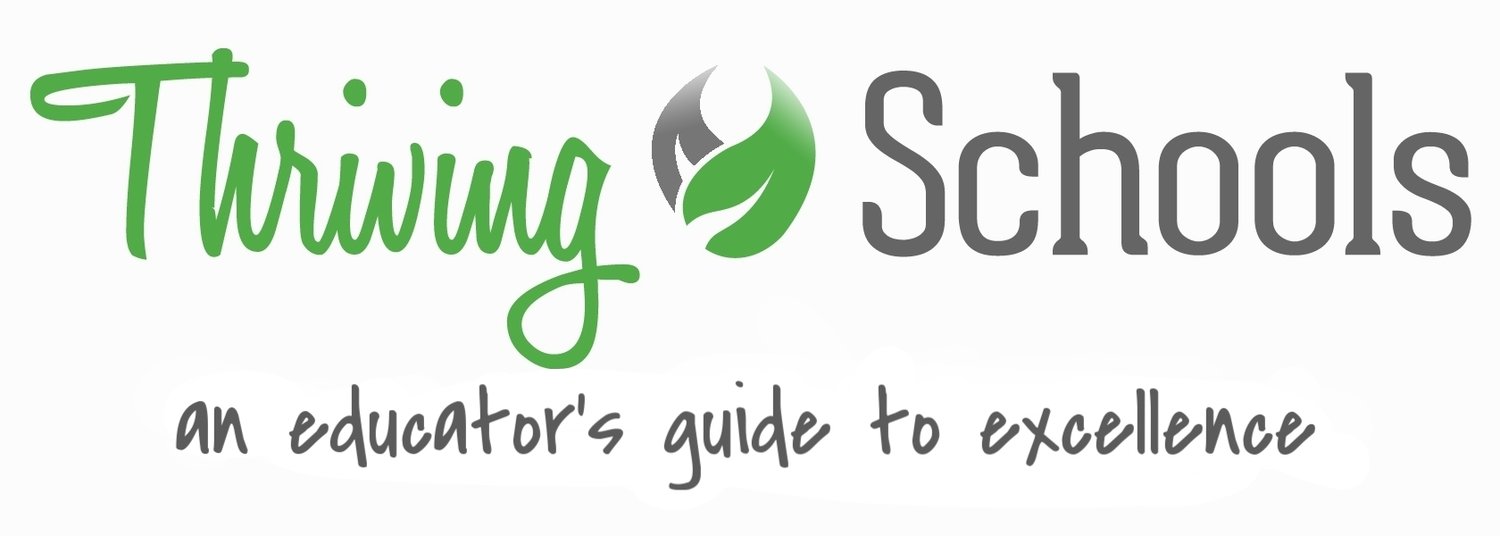Restorative Justice at Bright Star Schools - Part 2
/Marni Parsons is the Vice President of Student and Family Services for Bright Star Schools. We recently had the opportunity to speak with her about how restorative practices are used at Bright Star. This piece focuses on building community and how Bright Star is using a program called Council in Schools.
You can also check out a previous conversation that we had with Marni this past spring, as well as, Part 1 of this series that was posted on Monday!
Thriving Schools: On Monday, Hrag told us how restorative justice had dramatically improved school culture at Bright Star. Today, we’re hoping to dig in to more details of your program. Can you tell us how restorative justice actually looks at Bright Star?
Marni: Let me start by explaining the difference between restorative justice and restorative practices. Restorative justice is making amends for a particular act, or righting a wrong. Restorative practices are the means by which that justice is achieved. In a school setting, we’ll use various practices – restorative conferences, harm circles, effective questioning, etc. I think one of the things that a lot people have a hard time wrapping their heads around is that this is a practice, and not a prescription.
Thriving Schools: We’ve heard one of the program you use is called “Council in Schools.” What does it have to do with restorative practices?
Marni: The foundation of being a restorative community is that you’ve actually taken the time to build community. If you don’t already have a community built, you have nothing to restore when a harm is done. So Council in Schools, or what a lot of people call “Circles,” is the foundational element that helps build community through council.
Thriving Schools: Can you tell us more about how this works?
Marni: If you were to complete their training, the first thing you would learn is how to build community, how to get to know each other better, etc. Over time, you learn to use a series of prompts that allow individuals in the community to deepen the conversations that they’re having. Council in schools invites students to share stories based on their own experiences that ultimately allow them to appreciate differences between each other. In this way, when a harm does occur in a classroom, you can use the format of council to attempt to repair that harm and come to an agreement on consequences. And doing this is significantly more empowering for students.
Thriving Schools: What group or organization do you use for resources and support in this?
Marni: Well, that one’s easy! The name of the group that we work with is also called Council in Schools. We’ve brought this organization in to do trainings, and then we also send our people out to go to their trainings.
Thriving Schools: This sounds like a terrific program, but one that might be difficult to implement. Why do you think some schools end up having problems with programs like this one?
Marni: I would argue that others have struggled with this because they’re missing out on this community-building piece and the importance of everything before all hell breaks loose. When you think about schools and the things that make school fun and enjoyable – sports, homecoming, clubs, pep rallies, assemblies, etc. – that’s all in an attempt to build student engagement and community. And this is something that I’m trying to reframe for our team - that all those things that they’re doing each day are restorative practices. They’re the community building piece that allows our school communities to repair themselves when necessary. The positive, fun things teachers do – posting student work, acknowledging students, high 5’s, snaps, etc – those are restorative in nature. Again, if you don’t have community, you’re going to have a really hard time having these restorative practices work.
Thriving Schools: Moving on! Earlier you mentioned the use of effective questioning as another strategy that is used at Bright Star. How do you use restorative questions?
Marni: Well, let me start by saying these are basically the same questions regardless of who you complete a training with. Using these questions, I can tell if a student is engaged in his community or not. And what practice might make sense for that student. Let’s say you have a disengaged student who graffitis a bathroom wall. You bring that student in, you know it was them, and they finally own up to it. And they say, “So what – nobody here cares about me anyway.” That’s very telling, and it allows me to approach a situation in a certain way and respond with one set of practices as opposed to another.
Thriving Schools: If you had your way, would you even call this stuff “restorative practices?” You can imagine those who will pooh-pooh this as the ‘soft-stuff.’ What’s a better way to think about all of this?
Marni: I don’t think I would call these restorative practices, because you’re already insinuating that these are things to do only when you have something to restore. And really, the bigger purpose of these programs is how to build and develop a well-functioning civil society. One that isn’t grounded in zero-tolerance policies, recidivism, and high prison rates. Think about it – how many hours will we spend on interventions for a student in math? But somehow, when it comes to behavior, we just expect students to act in a certain way, assuming that somewhere else in their lives they’ve learned how to act respectfully.
Thriving Schools: What would you recommend to someone who wants to get more information on restorative justice?
Marni: I’ve included the following resource below that provides an excellent overview. It’s an older document from the IIRP and fills in a lot of the details!






